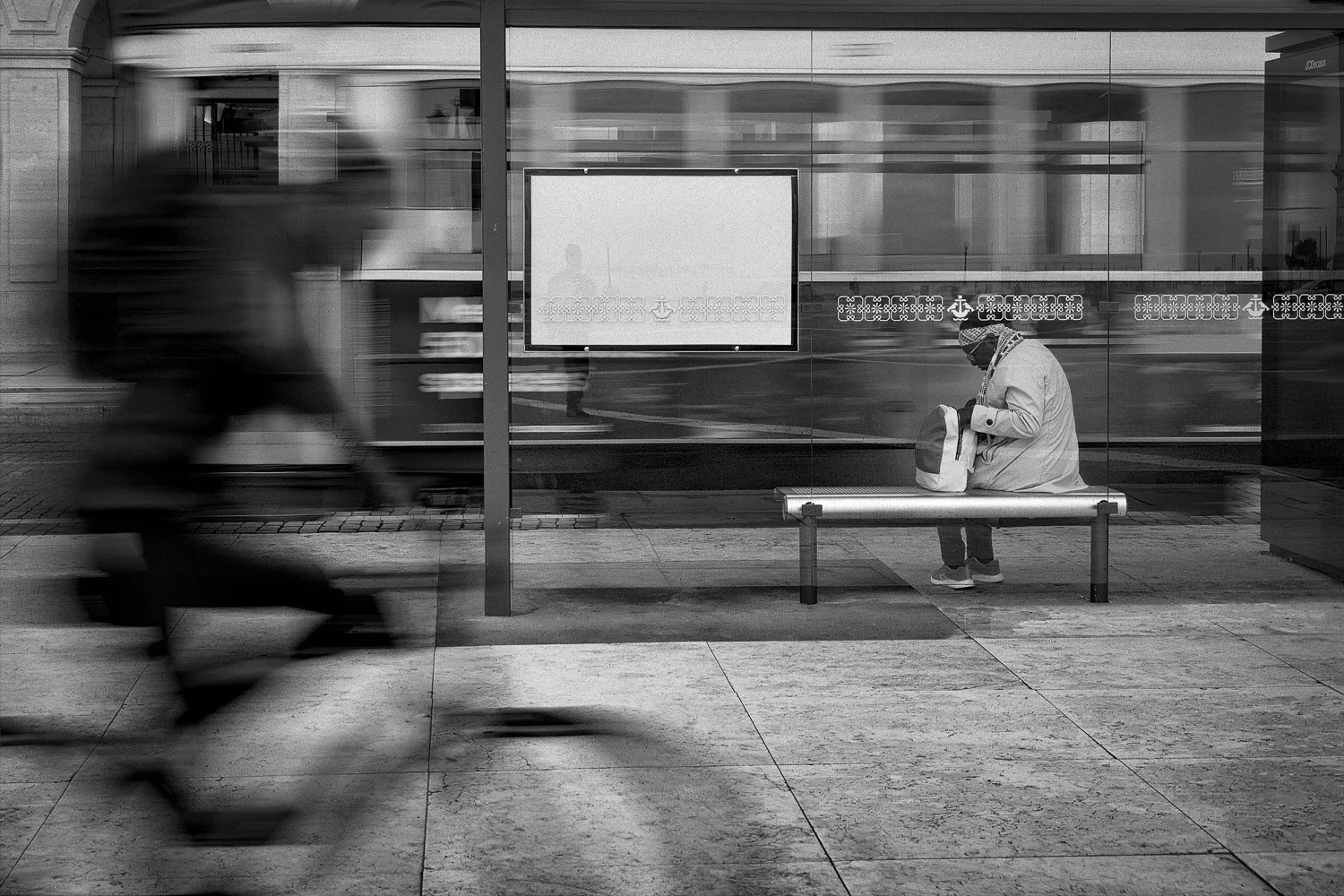Waiting Without Waiting: The Art of Presence in Street Photography
Should I Go or Should I Stay?
Like a song’s refrain, the question repeats itself, more times than I care to admit, while I stand on yet another street corner, waiting for something to unfold in front of my rangefinder’s lens. As I explore the streets, I stumble upon a location that feels almost right. The light is casting long shadows, drawing out texture and detail. The stage is set, but it lacks the one element that brings the frame to life: a human presence.
And so, I wait. But do I wait with calm intention, anchored in some Zen-like state of readiness? Not always. If I am honest, I have found myself restlessly glancing at my watch, checking my phone, or quietly convincing myself that the decisive moment has passed. I have a theory that the instant you decide to stay put, a space once teeming with movement becomes inexplicably still. Then, almost like a magic trick, the moment I give up and walk away, someone inevitably steps into the frame. The very figure who might have completed the picture, only for me to register the composition in my mind’s eye but not capture it on film.
In street photography, there are no hard and fast rules. A quick search online reveals a multitude of approaches, with well-known photographers each finding their own way of capturing the rhythm of the street. Some favour boldness, others discretion. But whatever the method, I believe it is essential to remain mindful and attuned to the character of the city. What might pass unnoticed on a New York avenue, such as raising a camera and flash inches from someone’s face, could provoke an entirely different response in Berlin. Even in London, lingering too long on a corner can raise eyebrows.
Gauging the flow of the streets is not merely practical. It is, I think, fundamental to drawing out the unique character of the urban stage.
Intuition, Instinct, and the Missed Frame
Like any fisherman, we all have tales of the one that got away, and in the retelling, the fish often becomes a whale. I have missed more photographic opportunities than I can count. Some slipped by so quickly that capturing them would have required almost superhuman timing. Others I missed not through speed, but through overthinking.
In Lisbon, I became fixated on a tram stop in Praça do Comércio. The light was right, the composition felt right, and I convinced myself it was only a matter of time before the scene would come together. I stayed there far too long, rooted to the spot. While I waited, a far more compelling composition unfolded nearby. I saw it, clear as anything, but my refusal to shift position meant I missed the opportunity.
The lesson? Pre-visualising a scene can be useful. But in street photography, reacting to the moment is often more valuable than sticking rigidly to a plan. Sometimes it is better to follow your heart than to listen to your head.
Practising Stillness Without Stagnation
Attention is not passive. It is not simply standing still and hoping something will happen. If anything, it is an act of quiet engagement, a way of being fully present without exerting force. There is a difference, I have come to realise, between loitering and observing. One invites suspicion; the other invites the practice of truly looking.
My most rewarding photographs rarely appear when I chase them. They arrive when I allow the scene to settle, when I become part of the environment rather than a disruption to it. There is no mystical alignment of stars or secret incantation, only the ability to notice. To be in sync with the surroundings and attuned to the subtleties of gesture, light, and movement in their unfiltered form.
It is a quiet discipline, this practice of doing without striving. Over time, you begin to sense when a space is building towards something, when the rhythm shifts almost imperceptibly. And with fingers crossed, a potential image may emerge. Perhaps this kind of waiting is not waiting at all, but simply being ready to respond.
No Magic Formula, Only Presence
There is no magic formula, no guaranteed outcome. Street photography rewards those who stay present, not those who stand still for the sake of it. In the end, I think it comes down to instinct, to reading your surroundings. You walk, you wait, you watch. You begin to sense the rhythm of a place, to notice the space between things. And sometimes, without trying, the moment finds you.
The decision to stay or to move is rarely clear. But I have learned to trust patience, to recognise when nothing is happening, and to sense when something still might.
Waiting without waiting is not a technique. It is a way of being, of seeing, of remaining quietly open to whatever the street may offer, if it chooses to offer anything at all.



